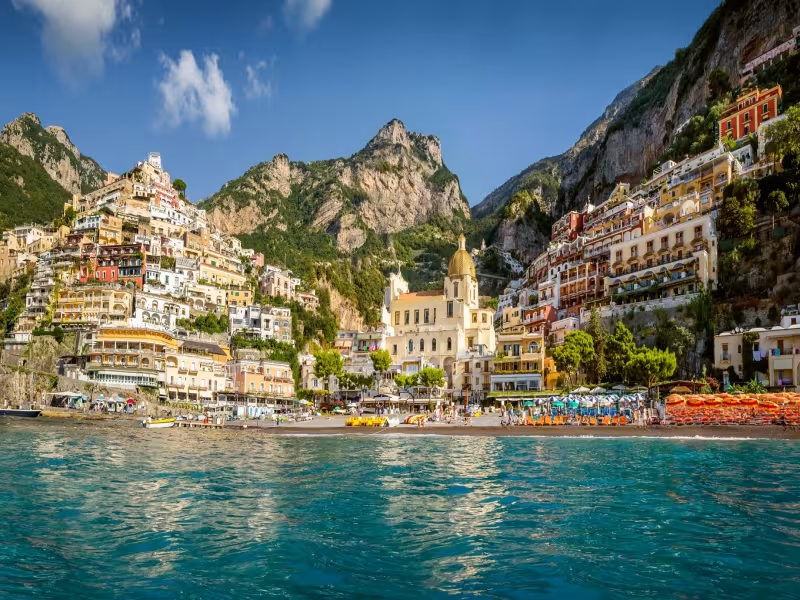
SHERIDAN, WYOMING – Feb. 2, 2025 – Nestled along the Tyrrhenian Sea in southern Italy, the Amalfi Coast is a sun-kissed paradise where cobalt-blue waters meet cliffside villages and a rich culinary heritage. Recognized as a UNESCO World Heritage Site, this stretch of coastline from Positano to Vietri sul Mare captivates travelers with its dramatic landscapes, timeless charm, and flavors steeped in tradition.
What is the Amalfi Coast and Where is it Located?
The Amalfi Coast spans the southern edge of Italy’s Sorrento Peninsula, stretching between the Gulf of Naples and the Gulf of Salerno. This iconic destination encompasses 16 municipalities in the Salerno province, including Amalfi, Positano, Ravello, and Vietri sul Mare. Known for its rugged cliffs, hidden coves, and terraced hillsides bursting with citrus groves and vineyards, the region is a masterpiece of natural and human ingenuity.
While its beaches are smaller due to the steep coastline, they offer pristine pebble shores and crystal-clear waters. Adventurers can explore enchanting sea caves like the Grotta dello Smeraldo in Conca dei Marini, a natural wonder glowing with emerald hues.
A Journey Through Time: History of the Amalfi Coast
The Amalfi Coast’s history is as layered as its landscapes. Once part of the Roman Empire, it later became a Byzantine ally before flourishing as the Maritime Republic of Amalfi—the oldest of Italy’s maritime republics. By the 10th century, the Duchy of Amalfi reached its zenith under Duke Manson I, dominating Mediterranean trade routes.
Despite Norman conquests in 1136 and subsequent decline, the Coast retained its cultural identity. Today, its medieval architecture, such as the Arab-Norman Amalfi Cathedral, and ancient footpaths like the Path of the Gods, whisper tales of its storied past.
Why the Amalfi Coast is a UNESCO World Heritage Site
Inscribed by UNESCO in 1997, the Amalfi Coast is celebrated as a “cultural landscape of exceptional value.” Its harmonious blend of human activity and untouched nature is unparalleled. Terraced lemon groves, vineyards, and olive orchards cling to cliffs, while villages like Atrani and Cetara preserve centuries-old traditions. UNESCO highlights the region’s ability to maintain biodiversity and historical integrity, offering a living testament to Mediterranean resilience.
Six Unmissable Stops on the Amalfi Coast
- Positano: A postcard-perfect village with pastel houses cascading to the sea. Wander its steep staircases, boutique shops, and the iconic Church of Santa Maria Assunta.
- Amalfi: The historic heart of the Coast, where the 9th-century cathedral and bustling piazza reflect its maritime glory.
- Vietri sul Mare: Famous for vibrant ceramics, this town dazzles with artisan workshops and sunlit alleys.
- Cetara: A quaint fishing village where time stands still. Don’t miss its prized colatura di alici (anchovy sauce).
- Villa Cimbrone (Ravello): This 11th-century villa’s gardens feature the “Terrazza dell’Infinito,” offering breathtaking coastal vistas.
- Path of the Gods: Hike this 9-kilometer trail from Agerola to Positano for panoramic views of cliffs and sea.
Five Culinary Delights to Savor
The Amalfi Coast’s cuisine is a feast for the senses, shaped by its land and sea:
- Amalfi Lemons (Sfusati Amalfitani): These PGI-certified citrus fruits, with their elongated shape, star in limoncello and delizia al limone cakes.
- Coastal Wines: Sip crisp whites, robust reds, and delicate rosés from local vineyards.
- Colatura di Alici: Cetara’s ancient anchovy sauce adds umami depth to pasta dishes.
- ’Ndunderi: Often called “the first gnocchi,” these semolina and ricotta dumplings date back to Roman times.
- Seafood Specialties: Fresh catches like grilled octopus and scialatielli ai frutti di mare (seafood pasta) dominate menus.
A Timeless Escape for Modern Travelers
The Amalfi Coast is more than a destination—it’s an experience. Whether you’re exploring Ravello’s gardens, savoring a lemon-infused dish, or sailing past hidden grottoes, every moment here feels like stepping into a living painting. With its UNESCO-backed legacy and timeless allure, this Italian jewel continues to enchant travelers seeking beauty, history, and flavor.